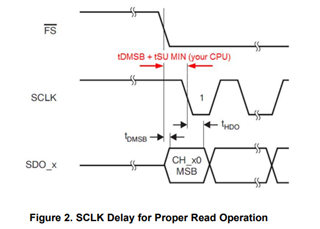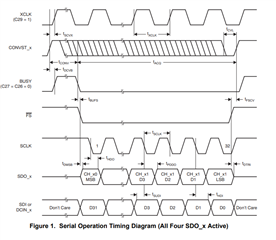Tool/software:
Hi
Has anyone been able to interface via SPI an ATMEGA2560 to an ADS8568?
In my current application, the ADS8568 is layout to operate in serial mode.
Until now I have been unsuccessful in getting readings back on the MISO line.
After looking at the spec sheet for ADS8568, it's timing requirements appear to be a lot more demanding than what the ATMEGA2560 can do.
(It looks like it was made to work with C2000 or FPGAs)
For example this :
Care should be taken to ensure that the delay time of
the most significant bit (tDMSB) from the falling edge of FS/CS is met before applying the serial clock. This
delay is specified as 12 ns MAX
Since ATMEGA works at 16MHZ, its fastest instruction will be in 62nS!
Am I right in thinking the ATMEGA2560 will not be able to communicate via SPI to the ADS8568?
Any help would be appreciated.




